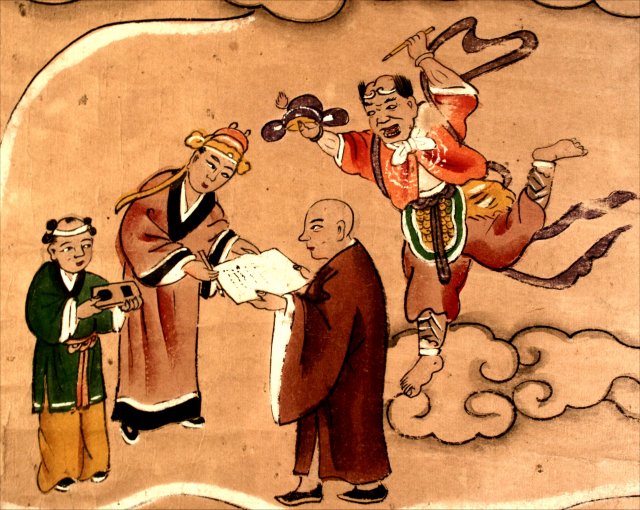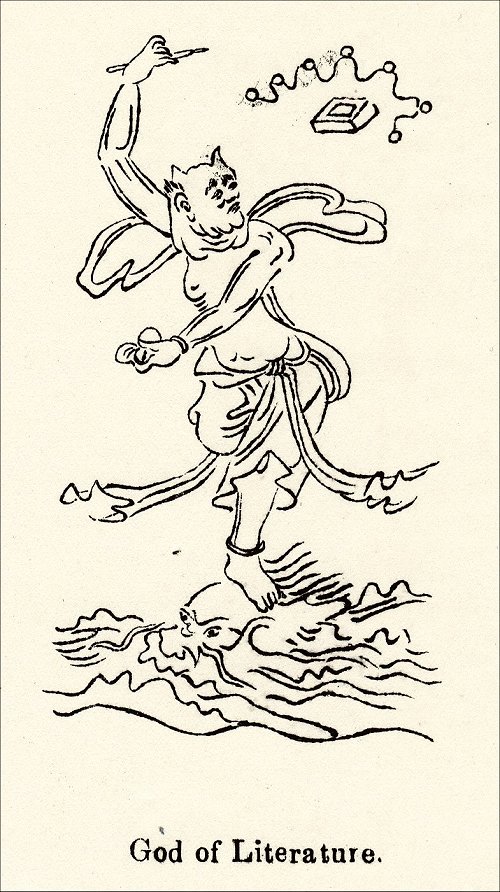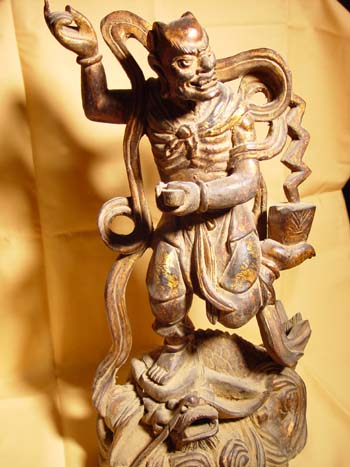
While the action portrayed here is uncertain, the protagonist seems to be carrying out a charitable act to a monk, that act both officially recognized by the auspicious spirit Kuixing behind the monk (see below) and contrasted with the intentions of licentious behavior in the "thought bubble" below this one on the scroll. This form of charity could be financing an ordination or making a contribution such as paper and woodblocks. (In the Qing Dynasty, it was not uncommon to make donations of blank paper as an act of charity – e.g. ten thousand sheets of paper for the purpose of making copies of freely distributed morality books.)
Also appearing in the ninth scroll, Kuixing as a young man was hideous in appearance but an extremely gifted scholar, winning first place in the imperial examinations. Yet when he presented himself to the emperor, the latter was so shocked that he refused to give Kuixing his due reward. Kuixing attempted suicide by drowning, but a sea monster held him up and then carried him up to heaven where he became the Star of Literature. (Kuixing is easily recognized by his stance, and he's often depicted with a sea monster under his right foot - see below.) Kuixing became the stellar deity of examinations, worshipped by scholars immediately before they entered the provincial and imperial examination halls. The brush he bears dots successful examinations with vermilion ink to indicate they passed.


A wooden statue of Kuixing being borne upward by a sea monster